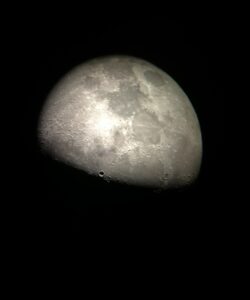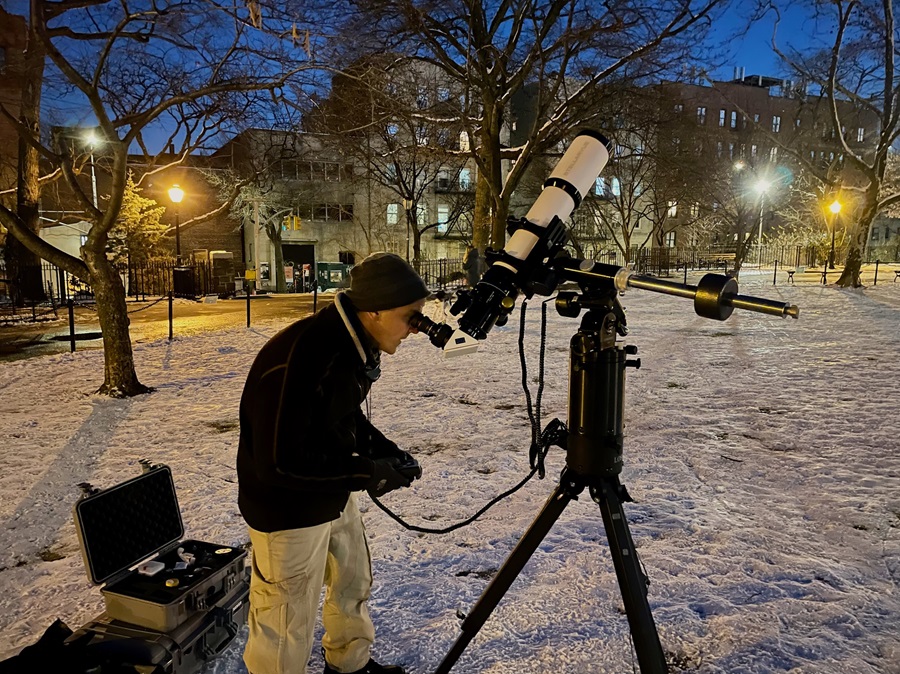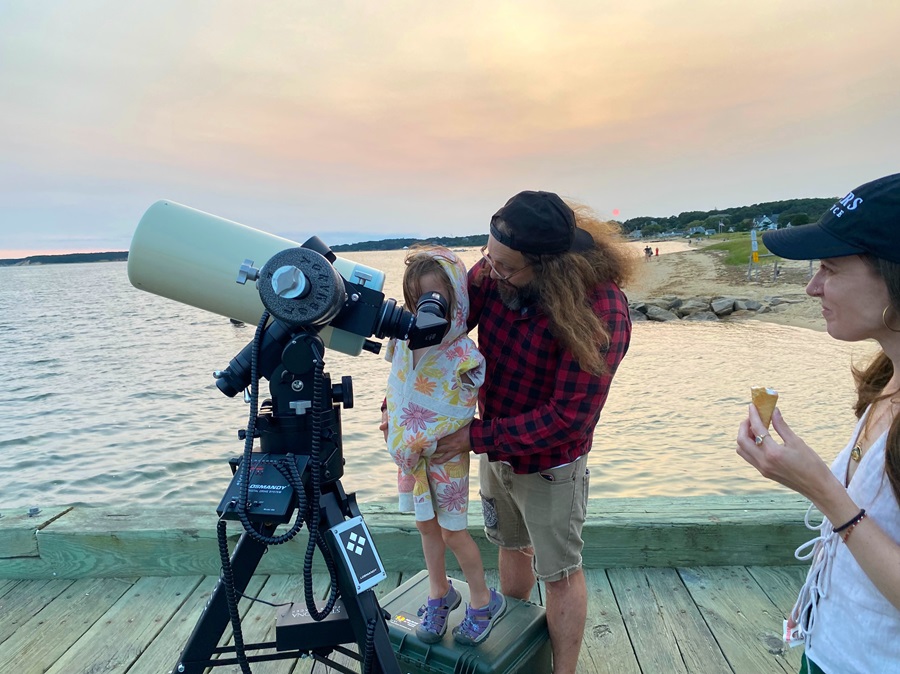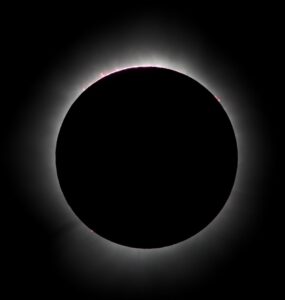My first telescope was a surprise Christmas gift. I’ll never forget my delight and also my frustration with early attempts to use it. It took time to acquire the knowledge needed to actually put anything in the eyepiece. Twenty years later, I’m very happy when people ask for beginner telescope recommendations. Telescopes can vex even the most experienced, and we amateur astronomers are keen to help people wanting to learn more. Let’s start with some books.
Don’t buy any equipment until you know the night sky. The first challenge for beginners is learning how to aim a telescope at a target. It’s much harder than you might think. The Moon seems like a big object in the sky, but looking through the eyepiece of a telescope is like peering through a straw; you can only see a tiny patch of sky. The object you’re after might be just out of view while you’re adrift among hundreds of unfamiliar stars that you can’t see with the unaided eye. Familiarity with the brighter stars and major constellations and how they change season by season helps a lot.

The Monthly Sky Guide by Ian Ridpath and Wil Tirion is a classic (look for the current 10th edition). It starts with an excellent primer covering stars, planets, the Moon, and lunar phases. Then you’ll find a chapter for every month of the year with a map of the night sky and featured objects for that month. Most are visible to the naked eye and require no equipment. It also contains lunar maps for use with binoculars or telescopes.
The Stars: A New Way to See Them by H. A. Rey is helpful for learning constellations and earth science topics. Once you have a telescope, you’re ready for another essential title, Turn Left at Orion: Hundreds of Night Sky Objects to See in a Home Telescope — and How to Find Them by Guy Consolmagno and Dan M. Davis (look for the latest 5th edition and the lay-flat version). A small red-light flashlight is a good companion to these books for consulting them outdoors in the dark without ruining your night vision.

Ready to get a telescope? Please don’t buy anything from Amazon. It offers some decent telescopes, but many are junk with flimsy hardware, poor optics, and wild claims about extreme magnification (which are advertising gimmicks). It’s difficult for someone inexperienced with astronomy to judge. And you’ll get little after-purchase support.
Instead, buy from a reputable retailer that specializes in astronomy, like Astronomics (astronomics.com), a family-owned business that’s been around for decades. It’s the type of business that you can call and get great advice (often the owner answers the phone) as well as support after you buy. Before you do, consult their excellent primers on telescope terminology and the buying guides on their website. You’ll get a good grasp of the technical terms and what might work well for you.

For beginners, I recommend a 70- to 100-mm refractor telescope on an altitude-azimuth mount. (See Astronomics’ primers for explanations of these and other terms.) I don’t like EQ (or equatorial) mounts for beginners because of their complexity. And I prefer refractors for beginners versus other types (reflector, catadioptric) because refractors tend to “just work.” Other types have some advantages over refractors (larger aperture per dollar for brighter images, portability). But they often need additional setup steps in the field, such as collimation (aligning the telescope’s mirrors with a small wrench). Easy for the experienced, daunting for beginners. When starting out, keep it simple.
The AstroMaster series by Celestron is great. These are complete kits with telescope, mount, finder, and two eyepieces. Look at the AstroMaster 70 AZ, 90 AZ, and 102 AZ. The Powerseeker 60, also by Celestron, is a good affordable choice (and is the current incarnation of my long-ago discontinued first telescope).
I also do not recommend telescopes that rely on smartphones for use. This new approach tries to make finding targets easier for beginners. According to reliable reviewers, they’re good instruments and the technology can work well. But I don’t like using smartphones in the field. They ruin night vision and are a distraction from the glorious spectacle overhead. And I think there’s something essential gained from the hard work of learning the sky and aiming the telescope yourself. I still get a thrill when, after studying sky and printed star charts and sweeping across star fields, I land an elusive target in the eyepiece.

Binoculars are a good option — more portable than a telescope and often less expensive. The Explore series 8×42 and 10×50 by Oberwerk (oberwerk.com) are great for astronomy. (Oberwerk is another family-owned small business specializing in binoculars.) The first number indicates magnification (10x), while the second (50) is the size of the lenses in millimeters. Larger lenses take in more light, revealing more stars and detail. But size and weight become a factor. You may want a monopod or small tripod to steady the view. If you have a larger budget, the Deluxe series is a step up in optical quality. And expensive image-stabilized binoculars (no tripod needed) are excellent for hand-held astronomy.
Keep in mind that, unlike even the smallest telescope, typical-size binoculars won’t resolve planetary detail like Saturn’s rings. But they will show wonderful lunar detail, beautiful star fields, and some of the brighter deep sky objects like the Andromeda Galaxy or Orion Nebula.
Astronomy will always be challenging at first. But it rewards patience and perseverance. The right equipment helps a lot. Clear skies!
Don’t Miss the Meteors
Every November as Earth orbits the Sun, it passes through the debris trail of Comet 55P/Tempel-Tuttle. The resulting display of shooting stars is called the Leonid meteor shower. The display is active now through Dec. 2, but the peak of activity will be overnight Nov. 17-18.
Unfortunately, a nearly full Moon will mask fainter meteors. But Leonids are known for bright fireballs and the occasional high-altitude explosion, so it’s worth trying to see them. The best viewing conditions will be right before dawn on the 18th, but you can see them all night. Look up in any direction and keep your eyes on the sky. For more about the Leonids and meteor showers, see my column “Watching for Beautiful Bursts of Cosmic Debris” from Nov. 16, 2022.
